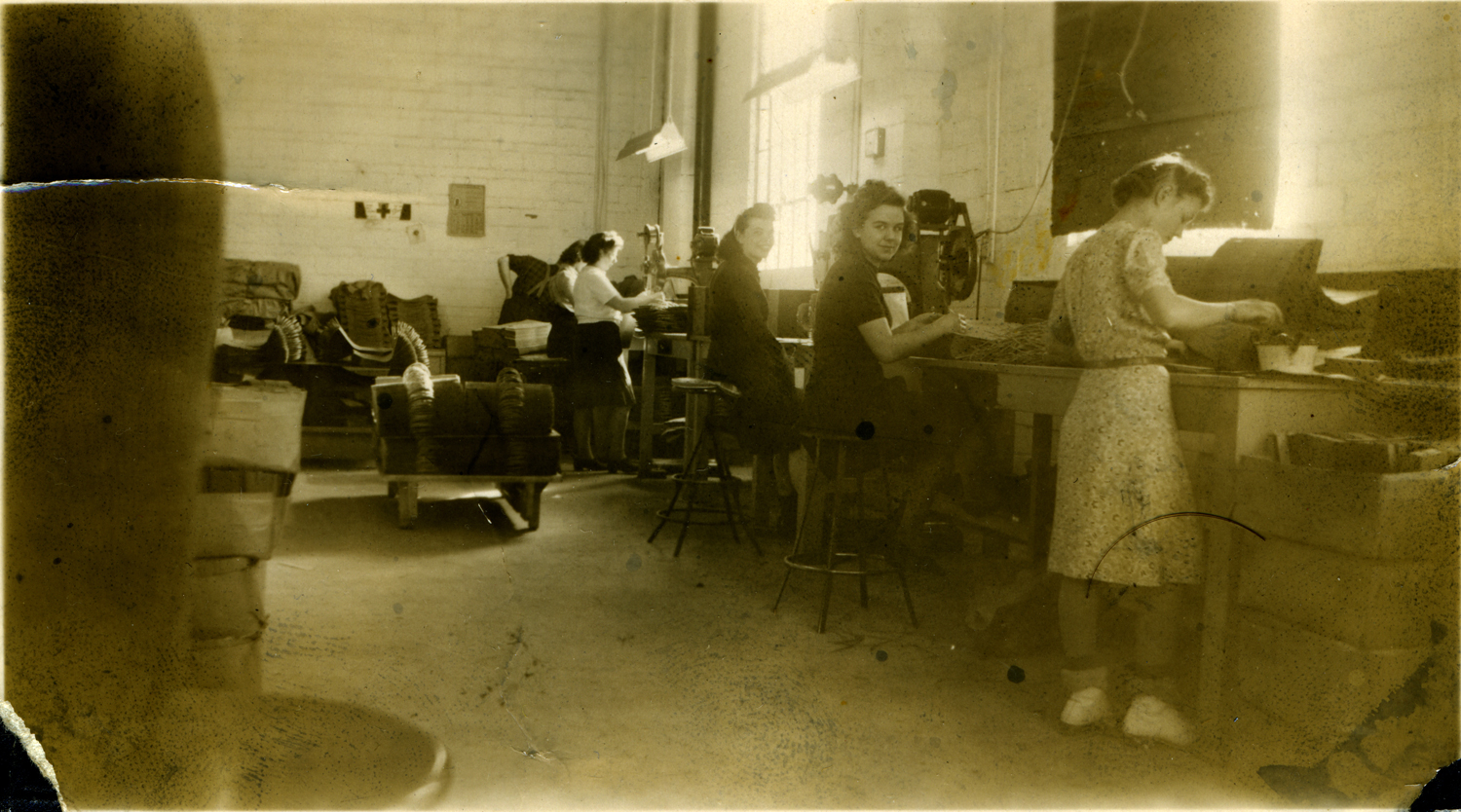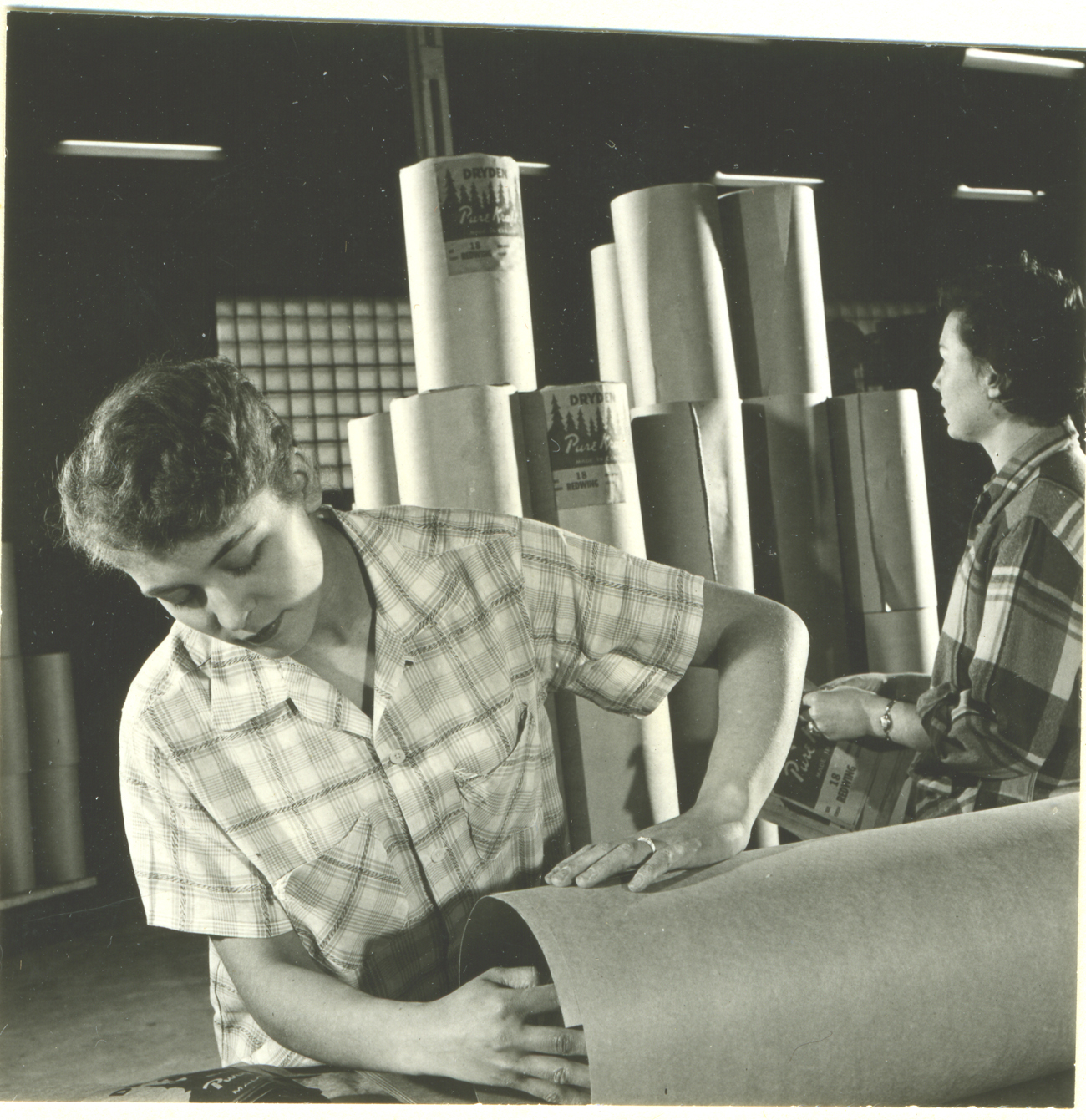Milly started working at the Dryden Paper Companys bag factory in 1943 when she was just seven-teen years of age. She worked there for one year.
Milly acquired her job after a friend, Lily Miron, put in a good word for her to one of the foreman. When Milly went to the bag factory on Lily's word, she was hired on the spot. Milly received no formal training during her first day of work, she learned by watching the more experienced workers.
The bag factory made grocery shopping bags. The employees sat in a row and each person had a specific task to perform. The first step was to make a fold along the top part of the bag. The second step was to add a cardboard lining and a handle along the fold. Finally, the third step was to staple the cardboard lining and handle to the bag. One operated the stapling machine by pressing on a foot peddle, very similar to driving an automobile. Milly also adds that the person who operated the stapling machine was also responsible for maintenance on the machine by cleaning and lubricating the parts with machine oil.
This photograph shows the girls working in bag factory. This pictures dates to about 1943 and was provided by Milly. Milly is the second girl from the right.

Similar to an assembly line, each worker only performed one of the tasks required to make a shopping bag. It was Milly's responsibility to make the fold in the bag. The bags came in piles of twenty to twenty-five. As Milly made the fold in each bag, she passed the bag to the next person who would perform the next step. As the job was very repetitive, it made the workday seem long and monotonous. The repetitive nature of the job was also very hard on ones arms and shoulders.
As the bag factory was close to the mill, there was always the strong smell that is so typical of paper mills.
Milly remembers making between twenty-five and thirty-five cents an hour. She worked six days a week, eight hours a day with a fifteen minute coffee break in the morning and in the afternoon.
After a year of working in the bag factory, Milly went to Fort William and worked in a factory inspecting artillery shells for the US Army.
At the end of the War she returned to Dryden and started working in the finishing room at the Dryden Paper Company. In the finishing room were rolls of paper of various widths that had to be packed and sent by rail car to the customer. Milly, like others who were just starting in the finishing room, was responsible for lining the floor and sides of the railcar with heavy paper. This was done so that the rolls of paper from the finishing room were not soiled while transported in the rail cars. Lining the rail cars with paper was physically demanding because it required a lot of walking on the part of the employee.
There were between twenty and thirty employees in the finishing room. There was one male foreman who was responsible for the male workers and one female foreman who was responsible for the female workers. Milly remembers the female foreman sitting and supervising the female workers in the finishing room.
Milly eventually moved up to packaging in the finishing room. There Milly packaged the rolls of paper by wrapping them in more paper and taping the ends before they were shipped by to the customer by rail car.
Milly only worked a few years in the finishing room. Like many young women at the time, she resigned just before she got married.
Women wrapping paper in the finishing room. Picture was donated by Charlie Rankin. Use scroll bar to see entire image. Please see more text images down this page.


Here is a picture of the girls in the Dryden Bag Company. This picture dates to the early 1940s and was provided by Milly.
Paper reels arriving to finishing room. Image courtesy of Dryden and District Mueseum

Making rail car liners in the finishing room. Picture courtesy of Dryden and District Mueseum
 width="1500" height="1171">
width="1500" height="1171">